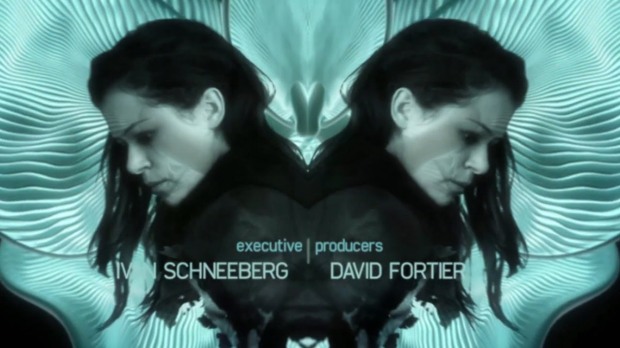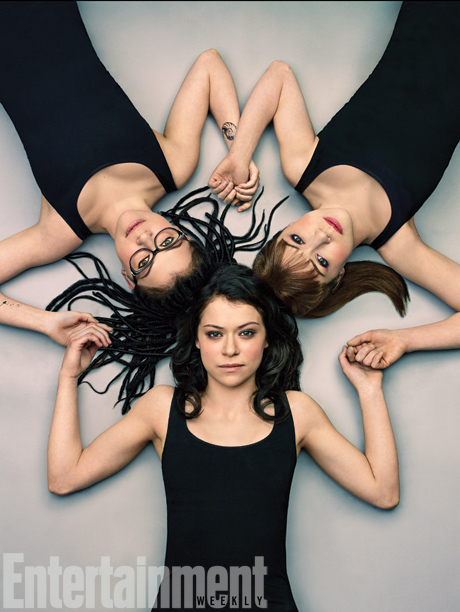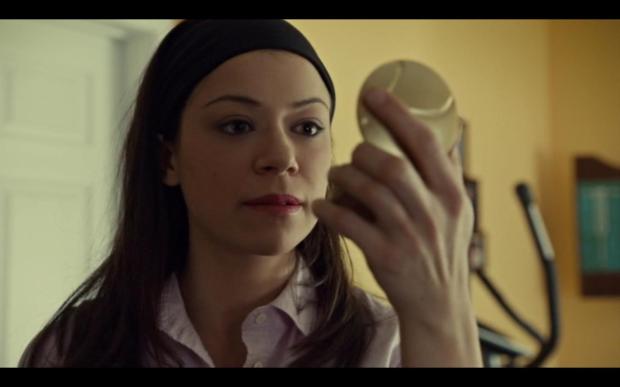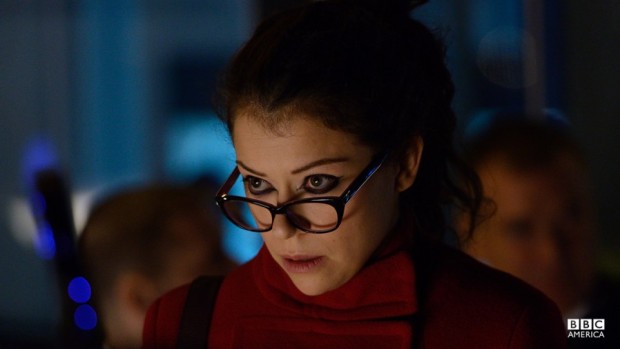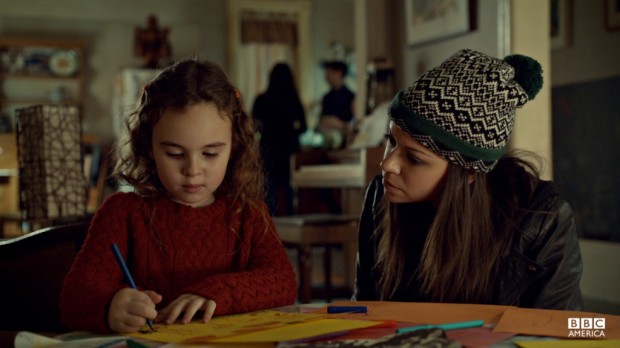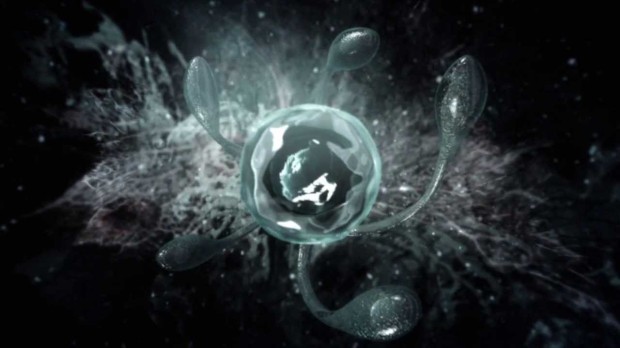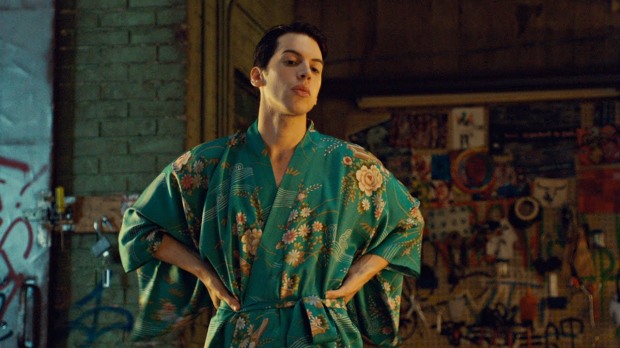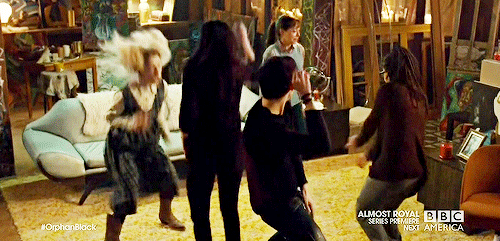“To combine is to create, to engineer divine”- Dr. Aldous Leekie
As we wrap up the chaos of our respective semesters, friend of the blog Leah Misemer steps in to remind you why Orphan Black is so utterly awesome. – Emily and Kazia
Upon entering its third season, Orphan Black has gained attention from numerous sources, including The New York Times and, as referenced in a previous post, the New Yorker. Emily and Kazia have generously allowed me space here to geek out about the show, and the show is a thinker. It isn’t something you watch while you’re cooking, or grading, or whatever else. It’s a show you sit down and pay attention to, like BBC’s Sherlock (why are all the detail oriented shows from the BBC?). When you do pay attention, you notice the show’s craft: Maslany’s subtle acting performances that make us feel we are watching different people, while the narrative is crafted in a spiralling structure that begins with two people meeting (clones Sarah and Beth) and blooms out to encompass international corporate conspiracies. The opening sequence captures the technique, craft, and attention to detail that have made me a prosthelytizer for the show:
The sequence opens drifting through space and we view a single egg, that spirals into a plant-like formation, splitting into four parts. After that, we are treated to a kaleidoscope of color, as shapes double, triple, and fracture. At one point, we are even treated to a doubled image of Maslany. The multiplication of figures recalls Maslany’s acting craft, while the spiralling movement references the carefully crafted narrative of the show.
I. To Combine is to Create
The main thing that draws me to the show is Maslany’s acting prowess. True, she transforms herself to become each different clone, so that Sarah, the punk rock clone, carries herself differently from Allison, the suburban housewife, who feels like a different character from Helena, the crazy Ukrainian with a sweet tooth, who is different from Cosima, the scientist studying their clone biology. Maslany plays all of these characters, but they each read differently; I love Allison because she’s a secret bad ass, but I love Helena for how devoted she is to Sarah. The show runners do everything they can to make us see the clones as different characters in promotional materials, as in this photo from Maslany’s photo shoot with Entertainment Weekly depicting Cosima (left), Sarah (middle), and Allison (right):
The challenge of transforming yourself into different people would be enough to demonstrate quality acting ability, but Maslany’s acting craft doesn’t peak there. We frequently watch clones disguise themselves as one another, as we do in this clip from the first episode where Sarah transforms herself into Beth, the police woman clone who steps in front of a train:
I’ve always had a penchant for scenes where actors get to impersonate themselves, as in “Who Are You,” the episode of Buffy the Vampire Slayer where Buffy (Sarah Michelle Gellar) and Faith (Eliza Dushku) switch bodies. In that episode, SMG doesn’t just act as Buffy, she imitates Buffy, parodying her qualities in a way that demonstrates a thorough knowledge of the character and allows us to see the subtleties of craft when she acts as Buffy. Maslany gets to demonstrate her acting chops by doing that all the time. In the first season, Sarah becomes Beth and at different points acts as Allison
and Cosima.
Also in the first season, Maslany gets to play Helena disguised as Sarah who is currently disguised as Beth,
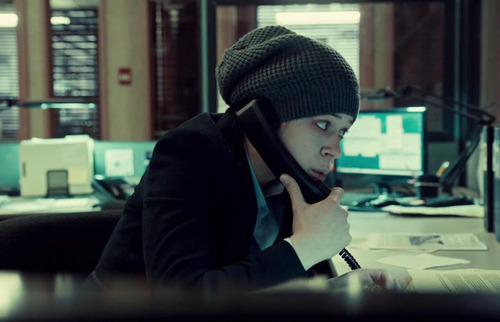
(Source: https://31.media.tumblr.com/1a55307c251a68903cb427319af6076e/tumblr_inline_n0y0af1upi1rc8epm.jpg)
and Allison disguised as Sarah.
Maslany pulls off these moments brilliantly, with Sarah’s British accent slipping out occasionally when she’s disguised as Beth or, as seen above, having to look over Cosima’s glasses when Sarah is disguised as Cosima. As with Gellar in the episode of Buffy, these slipped moments that call attention to the difference between imitation and acting help us see the virtuosity of Maslany’s performance elsewhere in the show.
II. To Engineer Divine
The craft of the show does not stop with the acting. Graeme Manson and John Fawcett have written and directed a tightly crafted narrative that starts very small and gains scope with every episode. As Mary McNamara put it in her review of the show for the Los Angeles Times, it asks, “How would you react if you discovered that what you had come to know as your life was based on misinformation?” The show asks this question over and over again, so that each episode in the first season adds new layers. Here are the layers added in each episode, each widening the scope of the cloning conspiracy:
Episode 1: We learn that there are people who look like Sarah and see German clone Katja Obinger’s murder.
Episode 2: We meet two other look alikes as Cosima calls Sarah to set up a meeting with her and Allison, widening the scope to three players.
Episode 3: We learn that Sarah is a clone and meet Helena, who has been murdering other clones, widening the scope to five players.
Episode 4: We learn about the fundamental religious group the Proletheans, who have brainwashed Helena into thinking clones are unnatural.
Episode 5: We learn about monitors, and the clones begin trying to figure out who their monitors are. This move places us in the land of conspiracy as we begin to learn about those responsible for the cloning.
Episode 6: We learn about Dyad and meet Dr. Leekie, granting a name and a scientific basis to the conspiracy.
Episode 7: We go one step up the Dyad hierarchy to meet handler Olivier.
Episode 8: We learn that the conspiracy is international as Delphine reveals the names of yet more clones. One non-clone character learns that Sarah is a clone.
Episode 9: We meet Sarah’s birth mother and learn Sarah is a twin.
Episode 10: We meet corporate clone Rachel, who works for Dyad, and Dyad offers the clones a deal promising unobserved freedom.
The second season widens the scope even more as characters finally leave Toronto. This gradual layering both prevents Manson from having to include too many exposition dumps (a major issue with constructing a science fiction universe) and mimics how one might figure out they were a part of a cloning conspiracy. After all, a well crafted conspiracy must also have many different layers in order to stay secret.
Maslany’s acting craft, demonstrated in combining characters, and Manson and Fawcett’s narrative crafting, demonstrated through the engineering of the spiraling plotline, make me appreciate this show, but there are other tiny details that enhance my enjoyment. Like the fact that, even though it’s dark and gritty and think-y, it is also often hilarious. Or the fact that all the actors have such wonderful chemistry with one another that you get invested in every single relationship. And Cosima and Delphine are adorable. And Felix.
I’ve already watched the first season twice in the past two months via Amazon streaming. What are you waiting for, a clone dance party to break out in your living room?
Leah Misemer is a PhD Candidate with interests in literature, visual rhetoric, and popular culture, which is a fancy way of saying she studies comics in an academic setting. Outside that academic setting, she enjoys reading fantasy and sci fi comics, and watching television that either makes her think or laugh. You can follow her on Twitter @lsmisemer.
